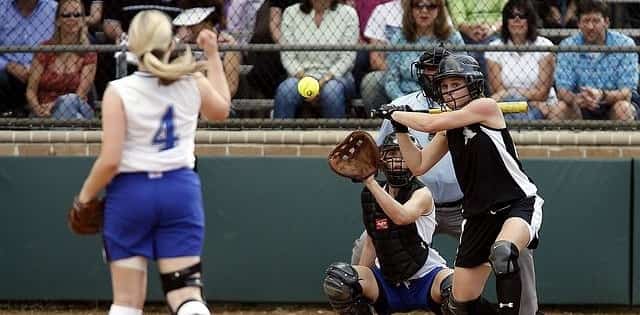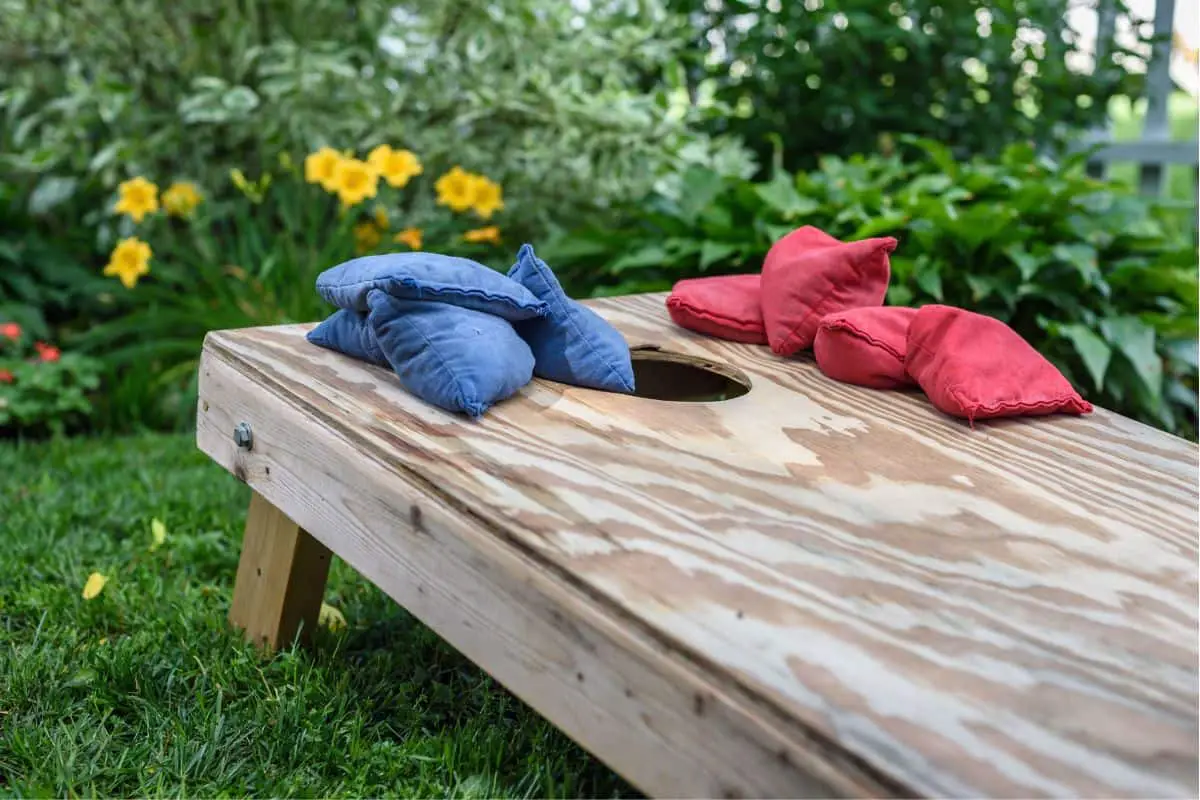Women’s softball is a sport that does heavily rely on the speed of the pitcher. Pitchers who throw fast will likely be noticed and chosen for advanced teams earlier on. However, how fast a woman can pitch in softball depends on their age and level of strength.
On average, pitchers in the World College Women Series pitch at speeds of about 62 miles per hour. However, some pitchers at the top of their game can pitch at speeds exceeding 70 miles per hour consistently. In 2012, the fastest ever pitch was recorded at 77 miles per hour by Monica Abbott.
How fast a pitcher can throw in a women’s softball team can depend on a number of factors, including their age and their abilities to spin or break the pathway of the ball. If you are curious to learn more about the speed of women’s softball pitches, this is the right article for you!

How Fast Are Pitches In Women’s Softball?
At the college level, most women throwing pitches in softball can achieve a speed of about 62 miles per hour. However, there are pitchers who focus more on speed and can throw pitches that can go much faster than that, at an average of even 70 miles per hour.
The world record for the fastest pitch in women’s softball belongs to Monica Abbott. She secured the world record in 2012 after throwing at a speed of 77 miles per hour.
What is interesting about this figure is that there is a relationship between women’s softball pitch speeds and their age. At the age of about eleven years old, this average speed is just about 40 miles per hour and goes up gradually to about 52 miles per hour when the girls hit fifteen years of age.
| Age of Pitcher | Average Speed |
| 10 | 37 miles per hour |
| 11 | 40 miles per hour |
| 12 | 45 miles per hour |
| 13 | 49 miles per hour |
| 14 | 50 miles per hour |
| 15 | 52 miles per hour |
| 16 | 53 miles per hour |
| 17 | 54 miles per hour |
| 18 | 57 miles per hour |
| Above 18 | 62 miles per hour |
Girls, in general, grow during puberty at a steady pace, compared to boys. This is why when you compare the average speeds of boys at approximately the same age, there are immediate jumps rather than a gradual increase in speed over time.
In softball, pitchers throw the ball from a distance of about 43 feet – in which case, the speed is also relative to the distance. To understand this, think about how an object gains momentum over distance and time when it is thrown.
Because of this particular reason, softball pitchers throwing at a speed of say, 74 miles per hour over the distance of 43 feet, can actually throw at a speed of 100 miles per hour from 60 feet away. This is why, compared to other sports such as baseball, the speeds may seem slower at a first look at the situation.
Also, consider that younger girls who are just starting out, such as between the ages of 10-15 years old, are likely to have greater diversity between their pitching speeds. As they grow older and practice more, this speed will gradually increase as the muscles become stronger, and grow used to the activity being performed.
When pitching, softball athletes use a relatively simple method. They step forward, shift weight to their other foot, and then pitch using an underhanded move, as opposed to an overhand move in baseball.
Using this method, softball players can direct all of the energy towards the release of the ball, which allows it to be swung forward at high speeds. Of course, the more a pitcher practices and builds muscle, the better the approach, and the higher the speed can be overall.

How Important Is Pitching Speed To Qualify For Softball?
There’s no question that pitching speeds play a huge role in qualification for a softball team, especially at advanced levels. However, a team isn’t just made up of pitchers who can throw at the fastest speeds.
Instead, even pitchers with average speeds can get far ahead if they are able to pitch spins and late breaks. Every team will need some pitchers who can throw at a speed higher than average, along with others who can introduce something the hitter does not expect, leading to strikes.
The ultimate goal is to get the hitter to miss the ball, usually through pitches that can surprise them later in the throw. Therefore, you don’t just have to rely on speed to get ahead and become part of a women’s softball team.
It’s also worth it to consider that speed itself is not always going to be enough to get the strike you are looking for. We mentioned earlier that the highest record for softball pitch speed is held by a woman named Monica Abbott.
However, her strike record is not even close to the highest in women’s softball. It is actually held by Cat Osterman, who also used a spin and breaks to her advantage.
How Can I Increase My Pitching Speed?
So, now that we all know how important pitching speed is, it’s time to address how you can increase your pitching speed! Here are some drills you can try to improve your overall speed, but always remember to stretch and warm-up before trying any of these drills with your coach.
Distance Pitching
This drill is the first step to improving pitch speed and is the most extensive way to make your goals materialize. With this drill in hand, you can learn to improve your speed along with the control you have over the ball.
Warm-up, and then start throwing to the catcher. However, after each consequential catch, you should move back a foot or two. Keep doing this until you are so far away that you cannot reach the catcher at all.
Now, you can start from the back, and after every throw, you move a foot or two forward. This exercise helps you develop the skill of pitching over distance, and helps improve your overall speed and agility.
One Knee Drill
If you are looking to improve your speed, the core area to work on is your upper body strength. The stronger your arms and upper body are, the higher the speed they will be able to pitch the ball.
To start this, you should kneel down on one knee, on the side where you will be pitching. Keep your body straight, and then throw at least thirty fast pitches to develop the strength.

Weighted Drills
One of the ways that you can develop muscle memory and strength to throw fast pitches is by using weighted balls. However, using this technique must come with caution – you should avoid using it more than necessary, as too much exertion can cause injuries.
The usual softballs you use in this sport weigh about 6.25 ounces. However, the weighted balls can have different weights, all the way up to around 12 ounces, double that of the usual softball.
Start with a smaller weight, and build up your strength slowly over time. Once you have built the strength to carry the less weighty balls, such as the 9 ounce version, you can move up to heavier weights.
On the other hand, there is also a kind of method to use balls that are lower than the average weight. This helps you build up the mechanism to bring about a higher speed, and then you can build strength with the usual softball. Click here for How Much Do Official Softballs and Baseballs Really Weigh?
Speed Drills
Speed drills are commonly done at the end of a practice session and push you to go full blast. In this drill, you pitch at the highest speed you can muster, at least fifteen times, and make sure to do it in the fastest time you can manage.
Usually, the way a coach will make you do this is by using two balls, so as soon as you get a ball you throw it back at the catcher. Over time, you can learn to do this as quickly as just a minute or under.
After the first set of fifteen softball pitches, you can then do another set after some rest. This way, you can learn how to pitch fast, and develop skills to improve your overall speed at the same time.

Frequently Asked Questions
1. What is the fastest softball pitch thrown by a man?
The fastest softball pitch in a major league thrown by a man is recorded at 103 miles per hour. The pitch was thrown by Eddie Feigner and is the fastest recorded softball pitch of all time.
2. How is the speed of the softball measured?
The speed of a softball pitch is calculated using advanced machinery. Before, this amount was calculated manually, but these days it is done using radar guns. Sometimes, multiple radar guns are used at the same time to corroborate the results.
3. What are the best kinds of cleats for softball?
When choosing cleats for softball always think about the league requirements, style, position, and personal fit. Here are our recommendations:
- Make sure they are allowed within the requirements of the league that you are playing for.
- Choose a cleat style that works for you. You can decide between metal, molded, or turf cleats depending on what you are using them for.
- Consider your position in your softball team and get cleats accordingly. For example, cleats with reinforced toes are often excellent for pitchers.
- Choose cleats that fit around your foot but still leave some room in the toes.
- Extra padding can be extremely helpful to provide comfort and shock absorption as you play.
Click here for Can You Wear Soccer Cleats for Softball?
Final Thoughts
Women’s softball pitchers can achieve amazing speeds, even going up to the 70 miles per hour range, with a lot of practice and hard work. We hope this article was helpful and informative about the world of women’s softball!





Leave a Reply
You must be logged in to post a comment.